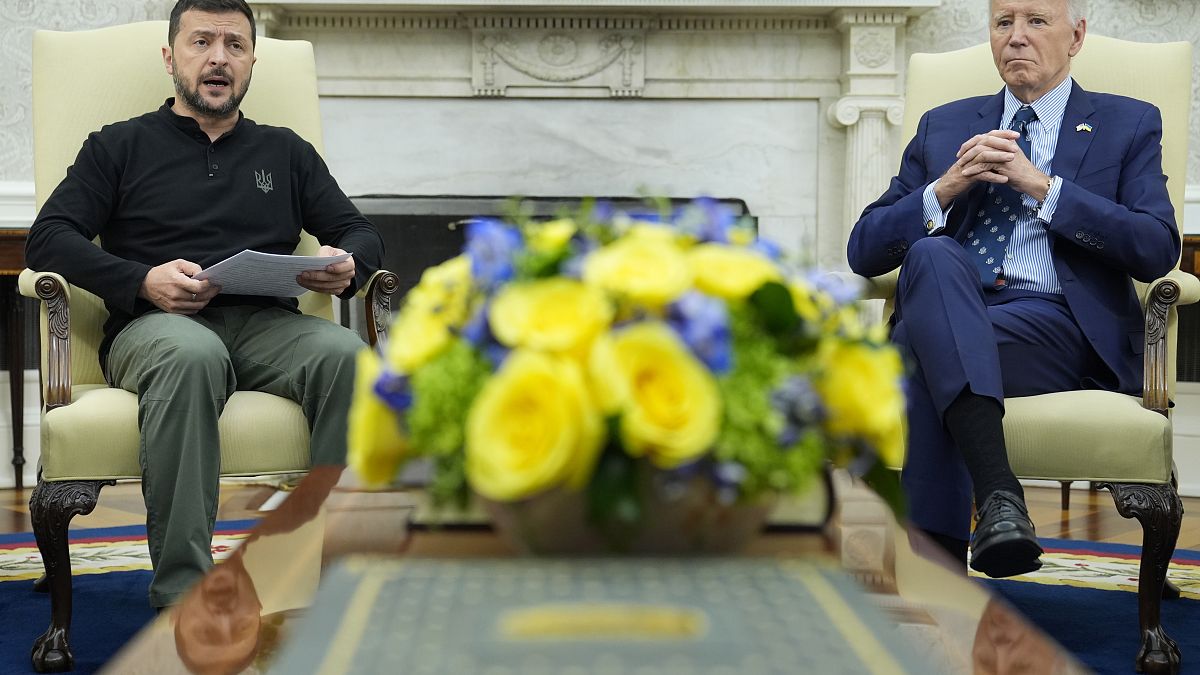Lifestyle
Much Ado About First Folios — the world's largest Shakespeare collection reopens

The new main exhibition hall at the Folger Shakespeare Library in Washington, D.C., on June 14, 2024.
Jared Soares for NPR
hide caption
toggle caption
Jared Soares for NPR
The Folger Shakespeare Library in Washington, D.C. — home to the world’s largest Shakespeare collection — is emerging from a four-year metamorphosis that has left it almost entirely transformed — new museum spaces, new leadership announced, new programming outreach.
After years of being available only to scholars, the jewels of the library’s collection — 82 copies of Shakespeare’s “First Folio,” printed 400 years ago — will now be together on public display for the first time.
We got a behind-the-scenes sneak peek to look at how the Folger is reaching out to new audiences.
Shakespeare and the classics in Chocolate City
So much has changed at the Folger Shakespeare Library since it closed for renovations in January 2020, that it makes sense that the show reopening its performance space is called Metamorphoses. Mary Zimmerman’s adaptation of Ovid’s epic Roman poem is all about change, and Karen Ann Daniels, who directs programming for the Folger and is artistic director of its theater, sensed that it could speak to underserved audiences in D.C. if the Folger Theatre did it right.
“The play could really lean into the larger history of the populations of D.C.,” she said. “I’m totally thinking Chocolate City. That’s really where my idea came from.”
Her idea was to do the play with an all-Black cast, a notion director Psalmayene 24 wasn’t sure he was on board with until Memphis police officers fatally injured Tyre Nichols, a Black FedEx employee, last year during a traffic stop. The director said he worked through his grief at the incident by incorporating elements of the Black diaspora into Metamorphoses to celebrate Black humanity.

”The play could really lean into the larger history of the populations of DC,” said Folger Theatre Artistic Director Karen Ann Daniels, shown here in the Folger’s performance space on June 14, 2024.
Jared Soares for NPR
hide caption
toggle caption
Jared Soares for NPR
“So in some ways this play is a response to America’s own proclivity for lethal anti-Blackness,” he said. “And when you do a show like this at a place like Folger, it says something about how not only Folger Theatre is changing, but how American culture is changing, how D.C. is changing, and how universal the stories that pass through this theater actually are. These stories are for everyone, and can be told in many different ways.”
The librarian has a favorite First Folio. It’s not the fanciest one.
A huge display case in the middle of the library’s new exhibition space glows softly, quietly announcing that it contains the Library’s crown jewel: 82 copies of Shakespeare’s First Folio printed in 1623 — more than a third of all the copies that are known to exist.
The First Folio marked the first time, just a few years after Shakespeare’s death, that his works were collected into a single volume, which makes it a benchmark for scholars. But no two of the copies collected by Henry and Emily Folger in their lifetime look the same. Some are skinny, others massive.

One of the Folger Shakespeare Library’s 82 copies of the First Folio, the Bard’s complete works printed in 1623, just a few years after his death.
Jared Soares for NPR
hide caption
toggle caption
Jared Soares for NPR
“These were all printed in 1623,” confirmed Folger librarian and director of collections Greg Prickman, “in the printshop of William Jaggard and his son Isaac, but over the intervening 400 years a whole lot has happened to these books. Sometimes they get damaged and parts are removed. Sometimes parts are added from other copies.”
Asked if he has a favorite, he headed to the far right side of the display case, past Folios prettily bound in leather with gold tooling.
“The one that I like the most is #30 — the only copy in this collection that has the original binding that was put on when this book was first purchased, not long after it was printed.
“So, if you wanted to see, ‘What does Shakespeare’s First Folio look like when it was just another quote-unquote new book?’ that’s the copy that you’re gonna be looking at, is #30.”
A sampler of Shakespearean insults
To the right of the main display case, there’s a smaller interactive display that lets you create a Shakespearean conversation. We only spent a few moments with it, but the display makes its own selections from phrases in the Bard’s plays once you choose a category — perhaps “blessing” (“You have been nobly born”) or “burning” (“Do as thou wilt, for I have done with thee”).
We only played with it for a few minutes, but we note that the plays contain a full complement of Shakespearean insults, so in theory, it could have you spouting such Elizabethan invective as:
“Away, thou rag, thou quantity, thou remnant.” (Taming of the Shrew, Act 4, scene 3)
“I am sick when I do look on thee.” (A Midsummer Night’s Dream, Act 2, scene 1)
“I must tell you friendly in your ear, Sell when you can; you are not for all markets.” (As You Like It, Act 3, scene 5)
“More of your conversation would infect my brain.” (Coriolanus, Act 2, scene 1)
“The rankest compound of villainous smell that ever offended nostril.” (The Merry Wives of Windsor, Act 3, scene 5)
“And thou unfit for any place but hell.” (Richard III, Act 1 scene 2)
“Villain, I have done thy mother.” (Titus Andronicus, Act 4, scene 2)
“Would thou wert clean enough to spit upon!” (Timon of Athens, Act 4, scene 3)
The Mulberry Conundrum
The exhibition space has lots of rare manuscripts in a room called “Out of the Vault,” which of course made us wonder what else is in “the vault,” which is not open to the public. So we asked, and were led down a staircase to an imposing, steel, bank-vault door, behind which lie the refrigerated (“because that makes the books happy”) library stacks containing the quarter of a million other volumes in the Folger’s collection.
There are also 100,000 objects down here, ranging from paintings of the Bard, to props, costumes, models and “pieces of the tree,” said Prickman, enigmatically.

Librarian Greg Prickman is the Folger’s Director of Collections and Exhibitions.
Jared Soares/Jared Soares for NPR
hide caption
toggle caption
Jared Soares/Jared Soares for NPR
“The mulberry tree,” he continued when pressed. “’Objects associated with Shakespearean legends’ is probably the best way to put it. I’m not the one to tell this story.”
So we looked it up.
Shakespeare allegedly planted a mulberry tree at his home in Stratford. More than a century later in the 1750s, the home’s then-owner, Rev. Francis Gastrell, got so tired of people asking to see it that he chopped it down, and local entrepreneur Thomas Sharpe bought the wood and had it crafted into Shakespearean souvenirs — everything from a carved casket that was presented to actor David Garrick (1717-1779), to snuff boxes and medallions.
So many items were created that they pretty clearly didn’t all come from one tree, but the Folger has some.
Why the Folgers placed a bet on the Humanities
The impulse to reach a more universal audience is what led Folger Library director Michael Witmore to spearhead the library’s $80.5M rethink — a wholesale “metamorphosis,” if you will, of a building and a mission that had been, frankly, functioning quite well.
“For the first part of the Folger’s existence, it was primarily a research library,” said Witmore, “serving scholars who were studying everything from animal husbandry to lyric poetry to theater. But we have the facilities and collection to do more, and this renovation allows us to take a world-class research library and surround it with a cultural institution that is a destination.”
A destination in the service of words written more than 400 years ago. Words that are also available digitally — “we digitize in order to create access, said Prickman, “and we exhibit materials in order to create access. The originals remain.”
And the presence of those originals just down the block from the Library of Congress, U.S. Capitol, and Supreme Court, was a big part of the intention of Henry and Emily Folger, said Witmore.

A view of the new underground entrance to the Folger Shakespeare Library’s exhibition areas.
Jared Soares for NPR
hide caption
toggle caption
Jared Soares for NPR
“We need these words and these stories to elevate our sense of what’s possible as citizens. When you think about what happens in the Capitol, which is where words — you may not agree with them, you may think they’re funny or shallow — but it’s where words really matter. Including when the court is looking at what those words mean.
“So to put a Shakespeare library where his works are being performed, and where people are working through the poems and other things, right in this spot I think is a big bet on the importance of the humanities and the arts in a functioning democracy.”
Story edited and field produced by Jennifer Vanasco. Broadcast story produced by Isabella Gomez Sarmiento.

Lifestyle
Kourtney Kardashian and Travis Barker Bring Baby Rocky on Blink-182 Tour

Travis Barker and Kourtney Kardashian are traveling with all the small things as they hit the road for the Blink-182 tour … because baby Rocky is riding the tour bus too!!!
Rocky was all snuggled up in a brown onesie Friday as Kourtney carried him in her arms … and they boarded the tour bus with Travis.
The family of 3 was in New York City this morning before hitting the road and heading south to Ocean City, Maryland … where Blink-182 is about to play a concert.

Kourtney gave birth to Rocky back in November in Los Angeles, so the kid is already getting accustomed to the rockstar lifestyle … he’s not even a year old and he’s already a roadie.

Rocky’s been spotted in some of Kourtney’s social media snaps from the tour — riding a miniature flying saucer around backstage — but this is the first time we’ve seen them all together as a family between shows.
Get this kid some drumsticks, STAT!!!
Lifestyle
Sharp-tongued, indomitable, and beloved actress Dame Maggie Smith dies at 89

Oscar, Emmy, and Tony-winning actor Maggie Smith played everything from wistful ingenues in Shakespeare to Harry Potter’s Prof. McGonagall and the Dowager Countess in Downton Abbey. She died Friday at age 89.
Kirsty Wigglesworth/AP
hide caption
toggle caption
Kirsty Wigglesworth/AP
Dame Maggie Smith – whose acting career spanned seven decades and traversed the stage and screen – has died at age 89. She passed away peacefully surrounded by family and friends on Friday morning, her publicist confirmed.
Smith was once so slender and delicate as Desdemona that Laurence Olivier’s Othello could easily smother her with a pillow. By the end of her career, no one would’ve dared try.
Though she was fine-featured and stood barely five-foot-five, casting directors realized early-on that her characters would inevitably appear indomitable, whether she was bristling with epithets in Shaw, casting spells as Harry Potter’s Professor McGonagall, or silencing opposition with sideways glances as Downton Abbey‘s formidable Lady Violet.
Act One: Precise diction in her prime
What Maggie Smith learned about holding audiences rapt, she learned early. She arrived on the professional stage in her teens, and graduated quickly to Britain’s National Theater, the West End and Broadway, where her precise diction proved ideal for delivering the barbs of restoration comedy, and the epigrams of Noel Coward. Let her play the sort of chatterbox that George Bernard Shaw wrote in The Millionairess, and it was sometimes hard for her co-stars to get a word in edgewise.

Almost as nonstop was the title role that won her a Best Actress Oscar in 1970 — her deluded teacher at a Scottish girls’ school in The Prime of Miss Jean Brodie.
“Give me a gherll at an impressionable age,” she purred, “and she is mine for life.”
The character was not, in fact, in her prime, but Smith most definitely was. In the next eight years, she starred in six films, including Travels With My Aunt and Death on the Nile, triumphed on TV in everything from Shakespeare’s The Merchant of Venice to The Carol Burnett Show, and on stage, held title roles from Hedda Gabler to Peter Pan.

Maggie Smith in February 1969.
Roy Jones/Hulton Archive/Getty Images
hide caption
toggle caption
Roy Jones/Hulton Archive/Getty Images
All of this before winning another Oscar in Neil Simon’s California Suite, for playing multiple characters including a conniving actress who is herself up for an Oscar, and who practices a delicious, hammily self-deprecating acceptance speech at one point, saying she doesn’t want to “sob all over Burt Reynolds.”
No sobs in Smith’s actual acceptance speech at the Oscars. She thanked her writer, director and co-star.
Act Two: Best exotic roles, some written just for her
All of this was well before a sort of second act in Smith’s career that found her prim and proper as a chaperone in A Room with a View, primly comic as the mother superior in Sister Act with Whoopi Goldberg, cranky in The Best Exotic Marigold Hotel movies, crankier still as the woman who came to stay in Alan Bennett’s driveway in The Lady in the Van, and downright viperish as mother to Ian McKellen’s King in Shakespeare’s Richard III.
Though he’d been slaughtering all comers for most of the movie at that point, there was such venom in her declaration that he was “proud, subtle, sly and bloody,” that McKellen looked shaken. As well he might.
Contemporary playwrights had also taken note. Peter Shaffer, the author of Amadeus and Equus, remembered he was once asked by Smith at a party why he kept writing plays about two men talking. He responded by going home and writing Lettice and Lovage specifically for her, about an extravagantly over-imaginative tour guide “to celebrate her glee and glitter and perfect timing,” he told interviewers. “And above all wit — her presence is witty. ”
Act Three: From Harry Potter to Downton
And then Smith’s career — for which she’d been made a Commander of the Order of the British Empire, and later a Dame and a member of the Order of the Companions of Honor — had a third act. One in which her fame grew out of all proportion to what she’d known before. Children recognized her on the street from the Harry Potter movies (she was in all but one of them).

Maggie Smith as Violet, Dowager Countess of Grantham on Downton Abbey.
Nick Briggs/PBS
hide caption
toggle caption
Nick Briggs/PBS
And while she was casting spells on kids, their parents and grandparents awaited her every utterance on TV’s Downton Abbey, where for six seasons, she brought a capricious sense of humor to the sort of woman she never was in real life — aloof, entitled, un-diplomatic, impatient, argumentative, hidebound, and so thoroughly winning, audiences couldn’t get enough of her.
That, at least, Lady Violet had in common with the woman who played her. Maggie Smith left audiences craving more of her presence for seven decades, though she worked so constantly that the dowager countess’ most famously clueless question — “what is a weekend?” — might almost have been her own.
Lifestyle
L.A. Affairs: An LAX flirtation had me on cloud nine. Could we land the plane?

My brother dropped me off curbside at Los Angeles International Airport and yelled, “Run!” Our timing getting to LAX was thwarted by the kind of notorious L.A. traffic that airline change fees and crushed dreams are made of. Departure to Newark, N.J., was at 8:05 a.m.
It was 7:25 a.m.
I raced through the terminal and up the escalator, two steps at a time, with a carry-on and boots that were not made for running. The line to get through security was a mile long.
“Am I going to make it?” I deliriously asked the TSA agent as I handed him my boarding pass, shaking from the mad dash.
Without a word, he whisked me past a serpentine of travelers and straight to the metal detector. I was baffled. Maybe he was psychic. I thanked him profusely and kept running.
I couldn’t miss this flight.
My mother insisted I fly “home” to New Jersey for my birthday — her treat. I was deep into a drifting divorce, disillusioned, depressed and avoiding the other “D” word … dating. I also was hiding from the unwelcome advances once the word got out. I felt perpetual dread and I felt wobbly. “Snap out of it,” Cher kept telling me in my mind.
By the time I got to Gate 40, I was giddy from shock and out of breath. I looked around and exhaled.
To my left was a tall, bald man wearing glasses and a tweed blazer. He looked familiar. “Who is that?” I whispered to the also tall, handsome man to my right, holding a coffee cup and wondering if I was talking to him.
He looked at me quizzically and squinted: “Isn’t that the guy who wrote ‘L.A. Confidential’?”
Bingo. Impressive. But neither one of us could remember his name. It was fun trying.
Suddenly, I felt compelled to tell this lovely man how close I came to missing the flight, how much traffic there was, how fast I ran, in boots with a heel, and how I imagined he‘d probably experienced the same exact thing minus the boots.
No. He had gotten there hours before, breezed through security and was on his third cup of coffee.
Boarding started. It felt like we both wished there were more time. “It was nice talking with you. Have a great trip,” I said and meant it.
“You too,” he said, smiling back.
Sparks flew.
After the in-flight movie ended, I looked up, and there he was. I waved; I was glad to see him again. I thought he was on his way to the restroom. He wasn’t. He‘d come to find me. It was good I had an aisle seat.
For the next two hours, we dove in, surrounded by strangers.
He’d spent the last few years in L.A. dating around since his divorce. He seemed as universally disillusioned as I was and had told his mom a few days before that he was giving up.
At one point, he knelt down in the aisle to get closer. His salt-and-pepper cool felt warm. He touched my shoulder a few times. I didn’t mind. He was confident, funny and very much a grown man who also seemed impervious to heavy turbulence.
People in the rows nearby could hear everything we were saying. Some were staring. Some climbed over him. Then the beverage cart came butting in. We made plans to have dinner when we returned to L.A. He gave me his card.
“That was incredible,” said the woman next to me, who had pretended to be asleep to give us some privacy. It was incredible. A big cloud lifted. I couldn’t stop smiling.
When I got to baggage claim, there he was again. I told him my mom was coming to pick me up. “Can I meet your mom?”
Her SUV was waiting exactly where we exited. She ran out to hug me and open the liftgate, wondering who this guy was carrying my luggage.
“Mom, this is Mark. We met on the plane,” I said.
“Hi, I’m your daughter’s new boyfriend,” he said as if it were already true.
Without missing a beat, she shot back: “Good, because you’re very handsome.” We said goodbye in a flurry.
“What happened to you on that flight? You’re different. You’re going to marry him,” my mom said emphatically.
I stuttered. I kind of believed her. I was different. Over the next week, we texted and decided on Terroni for dinner, a mutual Italian favorite.
He was waiting for me out front. We spent five hours in a booth drinking, eating and laughing. When we were in the middle of dessert, fireworks went off from the Christmas tree lighting nearby at the Grove. Everyone ran outside. He sat next to me when we came back in for the first kiss. We closed the place down. We didn’t want the night to end.
He made me an engagement ring out of a plastic swizzle stick a few nights later at a sushi bar. We didn’t feel like we were moving too fast. We felt like we couldn’t move fast enough.
With that, I had to move my divorce from stalled to finalized. Quick.
Both of our marriages had come to screeching halts very unexpectedly. He had years of healing under his belt. I was still in the thick of it. I was stuck in quicksand, and he helped pull me out. His patience was steady as I cut cords and untangled myself.
We had planned to get married at a rooftop L.A. restaurant, with skyline views past the smog, to symbolize how we met and fell in love. Exactly two weeks beforehand, however, my mother was rushed to the ER with critical embolisms. We flew a red-eye back East with my brother and his wife.
Miraculously, my mom recovered but couldn’t fly. We canceled the wedding. She was adamant that we still get married on the day we planned: July 8. It was July 7.
Because my brother was going to marry us anyway, we thought: Why not get married on the plane? Flying back to L.A. from New Jersey, the same way we met but in reverse?
And we did. Flying over Tulsa, Okla.
United Airlines published an in-flight magazine story about our on-the-fly midair ceremony with the headline, “On This Flight, I Thee Wed.” Ring-size steel hose clamps from the hardware store served as stand-in wedding bands. A flight attendant crafted a bouquet out of tissues.
“Do you believe in life after love?” I do now, Cher. I finally snapped out of it.
The author is a creative writer and producer who is directing the music-based documentary “Play That, Teo.” She’s a recovering stand-up comic, proudly from New Jersey and now residing in Los Angeles. She’s on Instagram: @olanadigirolamo
L.A. Affairs chronicles the search for romantic love in all its glorious expressions in the L.A. area, and we want to hear your true story. We pay $400 for a published essay. Email LAAffairs@latimes.com. You can find submission guidelines here. You can find past columns here.
-

 News1 week ago
News1 week agoToplines: September 2024 Inquirer/Times/Siena Poll of Pennsylvania Registered Voters
-

 Politics1 week ago
Politics1 week agoNew House Freedom Caucus chair reveals GOP rebel group's next 'big fight'
-

 Business1 week ago
Business1 week agoCheaper Mortgages and Car Loans: Lower Rates Are on the Horizon
-

 Business1 week ago
Business1 week agoVideo: Federal Reserve Cuts Interest Rates for the First Time in Four Years
-

 Politics1 week ago
Politics1 week agoHouse committee to demand 'stonewalled' memo detailing Biden agency's 'curious' voter registration work
-

 Politics1 week ago
Politics1 week agoDem lawmakers push bill to restore funding to UN agency with alleged ties to Hamas: 'So necessary'
-

 World1 week ago
World1 week agoWhat’s South Africa’s new school language law and why is it controversial?
-

 News6 days ago
News6 days agoVideo: Who Are the Black Swing Voters?













